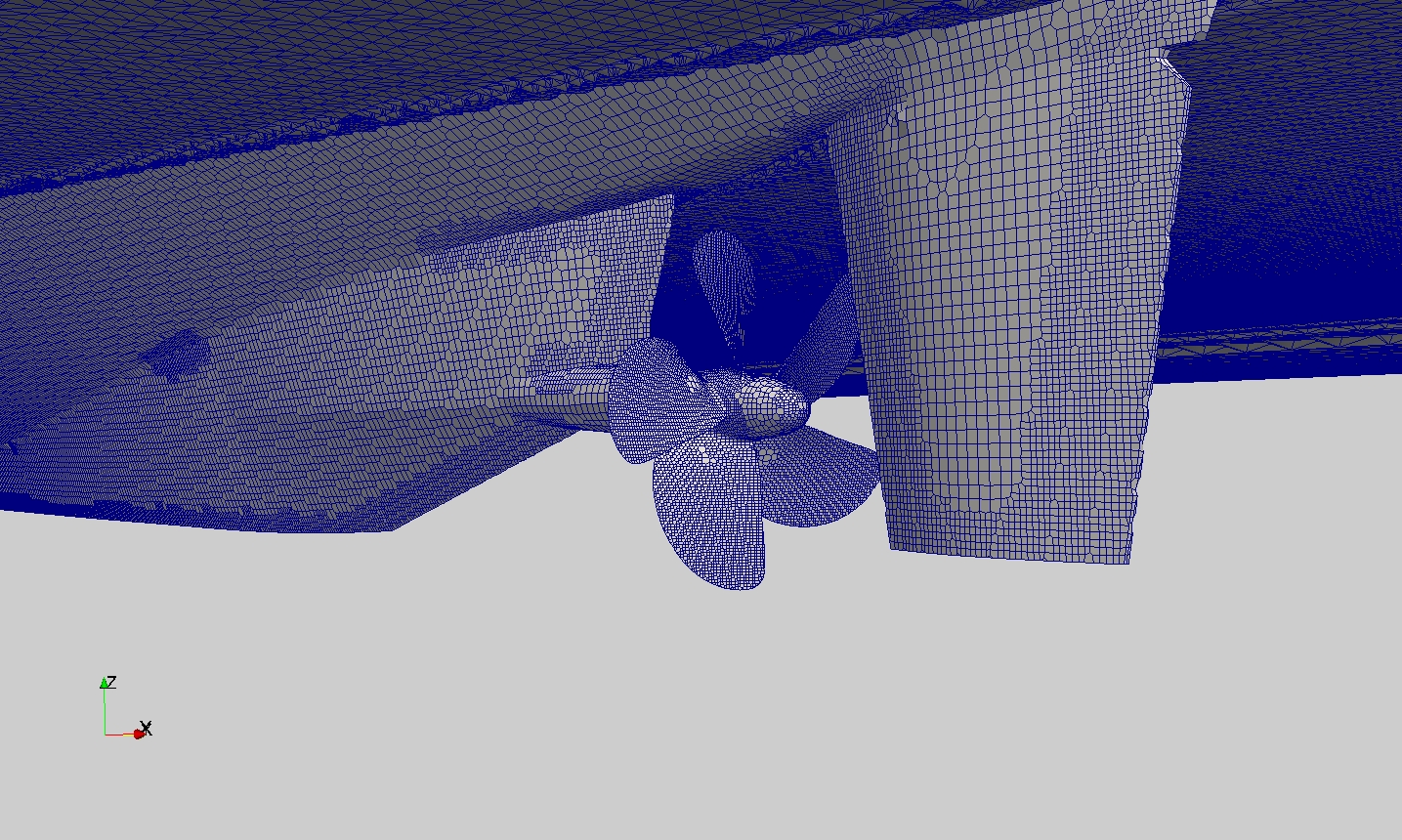Cotty Fay Marine Design uses the OpenFOAM software for projects such as modeling noise levels from a ship propeller. Image courtsey of Cotty Fay Marine Design.
Cotty Fay Marine Design is a small firm in Washington state that uses its engineering expertise to improve the design and performance of products, ranging from the mechanical parts on watercraft to the manufacturing equipment used by various industries.
Company owner Endicott (Cotty) M. Fay employs computational fluid dynamics to simulate how product designs may behave in—and impact—the environments in which they are intended to operate.
One example is a recent study he conducted for the National Marine Manufacturers Association, which asked him to evaluate the effect of wake surfing on lakeshore erosion and turbidity. Some lakes in the Midwest are prohibiting the water sport, in which surfers ride the waves created by a specially designed or outfitted motorboat, due to concerns about its possible environmental impact, Fay said.
To simulate the waves generated by the boats, Fay required significant computing resources. He used the Ohio Supercomputer Center’s (OSC) Pitzer cluster and OpenFOAM software to run the calculations. By harnessing about 200 cores of processing power, the run took only about 48 hours to complete. Although Fay has his own advanced computer workstation, at 12 cores the same calculations “would have taken weeks—it wouldn’t have worked,” he said.
After reviewing the data and conducting further analyses, Fay and his colleagues determined that the sport did not have a significant detrimental impact on the shoreline or lake, according to their recent study published in the Journal of Water Resource and Protection.
In addition to the wake surfing work, Cotty Fay Marine Design has been hired by commercial and federal government clients to design mechanical components—such as propellers, rudders and nozzles—that can reduce watercraft noise and its environmental impacts. The noise from large ship propellers, for example, can disturb the feeding routines of whales, Fay said.
Although the marine industry has long been a focus for Fay, the company also has tackled design work for other fields. Fay has studied the wind loads on a conveyer system that transports wood chips over long distances for the production of paper products. The firm also has analyzed designs for hamburger patty manufacturing equipment, home air purifier systems, and a washing machine that can effectively clean plastic used for manufacturing plastic containers.
The common theme to the work is hydrodynamics, or the study of how water or air may flow and impact efficiency and noise of these various mechanical systems.
Cotty Fay Marine Design plans to continue to work with OSC on these projects, as Fay appreciates the flexibility, reliability and affordability of its resources.
“Using OSC helps from a business standpoint, as it allows me to afford to do the work. It helps American businesses become more competitive— it’s a great service.”
